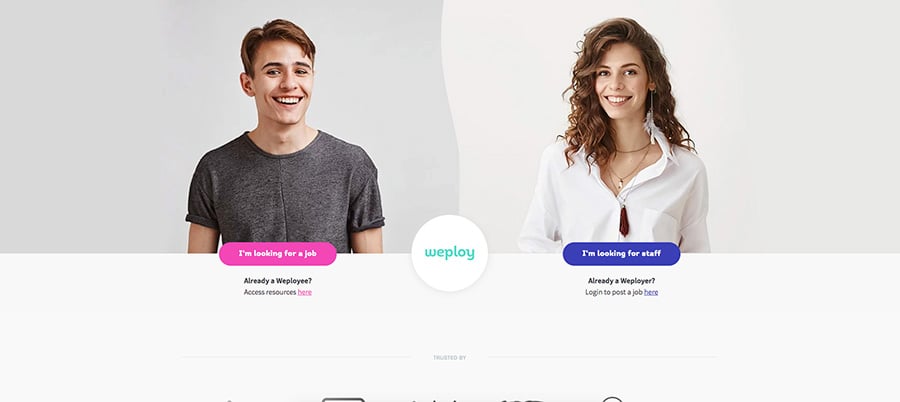A website design project can feel like climbing Everest, especially for smaller businesses. The journey up is going to make you question why you decided to do it and then even after you reach the summit, the descent remains taxing.
Traditional web design can lead to a standstill for teams. Now that we’ve adopted the Growth-Driven Design approach for website creation, the headache of website projects has been reduced significantly. They are actually something we look forward to now. That being said, there is still a considerable amount of unavoidable but necessary effort that goes into planning for a website redesign.
Here are 10 tried and tested tips that relieve the headache when planning your next website redesign:
1. Use your current metrics to set benchmarks
This data will play a pivotal role in many stages of the website redesign process. If you’re not currently tracking enough data on your website then I would seriously consider delaying the redesign process while you gather more insight to make decisions. The metrics you focus on will really depend on what sort of business you work in but here are a few universally important ones:
- Average unique monthly visitors
- Where they are coming from (e.g. Organic search, social, direct etc.)
- The devices they are using
- Average time spent on key pages
- Common actions or events on key pages
- Conversions and conversion rates
- Bounce rate
- Current organic search rankings for important keywords
- Domain authority
2. Should it stay or should it go?
Now comes the fun part where you rip your current site to shreds as you figure out which elements you could rework for the new site, and what can be tossed. This includes site pages, marketing assets, blog posts, or design elements, including the layout of certain pages. Be ruthless, don’t be a hoarder. It’s great to get some team feedback if possible, from different aged members of staff and even a survey from some real customers of things they love or detest.
Create a wish-list of everything you want to keep or things you think would make good additions. Remember to prioritise them by impact vs effort. Perhaps certain things can wait 😉.
3. Competitor analysis
Take a look at the websites of your key competitors. Note the aspects and functionality that you like or dislike, examine the layout of their pages and expected user flow. How did you get the information you wanted? How many steps did it take? Was it an easy experience? This isn’t about stealing their ideas, this is about figuring out how you’re going to make your site better than the competition, and ensuring you avoid their shortcomings.
4. Set goals
Be clear on exactly what you want to achieve with the new website. Using your current data as a benchmark such as those mentioned above and set SMART goals for key metrics. Make these goals clear and provide stepping stones or benchmarks for everyone who is involved with the process, including the designer, developers, and your team.
5. Be sure of your buyer personas
Your buyer personas should be one of the key driving forces behind the decisions you make for your website. Use our free tool if you don’t already have clearly established buyer personas. Think about each buyer persona for your business and how they would interact with your site. Explore the potential differences in behaviour between the personas and how you could tailor your site to suit each one. It’s worth noting if you could implement these easily on the content management system you are using. For example, HubSpot personalisation tokens and Smart Content make it pretty simple, but emulating the same sort of thing on WordPress will require more elbow grease.
6. Create a sitemap
Having the sitemap in place not only helps the developer gauge the size of the project, but will also help you keep your SEO strategy front of mind. Creating a visual sitemap using a tool such as Lucid Charts or even just in a word processing doc won’t take too long and makes it clear for everyone who is viewing it. Creating a sitemap early on in the website redesign process will ensure you avoid duplicate or cannibalising content, support user flows, and keep everyone on the same page (pun unintended but welcome).
7. Map your user flow
While the appearance of a website is important, the user experience needs to be the priority. Think about how you want the user to navigate through your website. As with most things on this list, the more thought you put into user flow in the early stages, the less you’ll be worrying about it later (plus your content writer will thank you by showering you with puppies).
Think about the final action that you want the user to take before they leave your site. You might have multiple scenarios, and it will vary depending on what stage of the buyer’s journey the user is at. For example, if the user is ready to get in touch to find out more about your product or service, map out each page and step that the user will take to get there and from which landing page. Make it as simple and logical as possible for the user to get to where they want to go.
8. Wireframe designs
This is where all your goals and strategy get translated into the site. The more collaborative you make this stage of the process, the more aligned and effective your website will be. We use InVision for all our projects, and include our marketing team, designers, and developers in the conversation, allowing everyone to comment and give feedback as the website moves from a wireframe into the actual furnished designs.
9. Get your team involved
It’s important to make everyone in the team feel valued and involved with the project. The more input you welcome from the team, the more invested they’ll be - which gives you a better outcome in your website. As mentioned, something such as InVision is great as it encourages discussion. Once it comes to the testing stage, you’ll want as many eyes (or mouse operators) as possible to attempt to break the site. So the more you get them involved from the start, the more committed they’ll be to seeing it through to the end.
10. Consider Growth-Driven Design
Growth-Driven Design is a progressive approach to web design, driven by iterations, allowing your site to constantly grow and evolve rather than staying stagnant until the next big website redesign. Rather than paying upwards of $15,000 all at once, the costs are spread out over an extended period and allowing it to be invested each month into improving the site. It strengthens the connection between your marketing and sales team with the website, enabling them to take a far more proactive strategic approach.
If your business is ready for a new website and is looking to grow their online presence, Growth Driven Design is the right choice for you, download our free ebook below to learn more about how to apply GDD to your marketing schedule and help you build a website that gets better with age.








